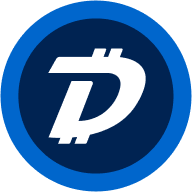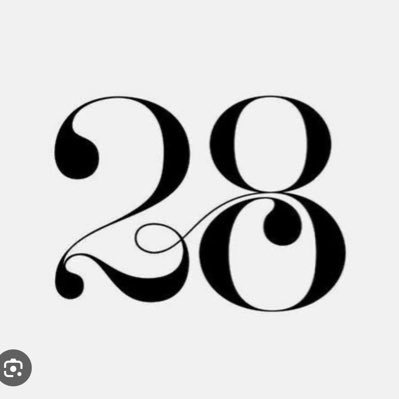DigiByte-koers
in AED

Over DigiByte
Disclaimer
OKX geeft geen beleggings- of vermogensadvies. Je moet zorgvuldig overwegen of het verhandelen of bezitten van digitale bezittingen voor jou geschikt is in het licht van je financiële toestand. Raadpleeg je juridische, fiscale of beleggingsadviseur als je vragen hebt over je specifieke situatie. Raadpleeg voor meer informatie onze Gebruiksvoorwaarden en Risicowaarschuwing. Door gebruik te maken van de website van derden ('TPW'), ga je ermee akkoord dat elk gebruik van de TPW onderworpen is aan en beheerst wordt door de voorwaarden van de TPW. Tenzij uitdrukkelijk schriftelijk vermeld, zijn OKX en haar partners ("OKX") op geen enkele manier verbonden met de eigenaar van de exploitant van de TPW. Je gaat ermee akkoord dat OKX niet verantwoordelijk of aansprakelijk is voor verlies, schade en andere gevolgen die voortvloeien uit jouw gebruik van de TPW. Houd er rekening mee dat het gebruik van een TPW kan leiden tot verlies of vermindering van je bezittingen. Het product is mogelijk niet in alle rechtsgebieden beschikbaar.
Prijsprestaties van DigiByte
DigiByte op sociale media



Handleidingen

Maak een gratis OKX-account aan.
Stort geld op je account.
Kies je crypto.
DigiByte Veelgestelde vragen
DigiByte is een open-source, gedecentraliseerd blockchainplatform dat actief is op het Unspent Transaction Output (UTXO) model om de privacy en veiligheid te verbeteren. Het project introduceert verschillende verbeteringen aan de Bitcoin-codebase, waaronder snellere blokcreatietijd, toegenomen schaalbaarheid en verbeterde transactiesnelheid. Het maakt ook gebruik van een unieke combinatie van vijf verschillende Proof of Work-algoritmes (PoW) om te zorgen voor decentralisatie en robuuste netwerkbeveiliging. Het native token van het DigiByte-ecosysteem wordt DigiByte genoemd, wat kan worden gebruikt voor digitale transacties, als waardeopslag en voor deelname aan het DigiByte-netwerk.
DigiByte biedt verschillende voordelen. DigiByte heeft een snelle blokcreatietijd van slechts 15 seconden, wat snelle transactiebevestigingen en efficiëntere gebruikerservaring mogelijk maakt. Daarnaast maakt het platform gebruik van meerdere PoW-algoritmes. Hierdoor wordt de beveiliging tegen potentiële aanvallen verbeterd en wordt een meer gedecentraliseerd netwerk gewaarborgd. Daarnaast heeft DigiByte een grote voorraad tokens, met een totale limiet van 21 miljard, waardoor het geschikt is voor microcompensanten en voldoende liquiditeit binnen het ecosysteem biedt.
Eenvoudig DGB-tokens kopen op het OKX-cryptovalutaplatform. Beschikbare handelsparen in de OKX-spothandelstermine zijn onder meerDGB/USDT.
Je kunt ook je bestaande cryptovaluta swappen, waaronderXRP (XRP),Cardano (ADA),Solana (SOL), enChainlink (LINK), voor DGB zonder vergoedingen en zonder prijsverschuivingen door gebruik te maken vanOKX Convert.
Duik dieper in DigiByte
DigiByte (DGB) je decentralizovaný blockchain, který funguje na modelu UTXO (Unspent Transaction Output). Tento model, který převzal i Bitcoin (BTC), nabízí větší soukromí a bezpečnost tím, že je sledování historie transakcí složitější. DigiByte podporuje různé funkce, jako jsou smart kontrakty, decentralizované aplikace (dApps) a bezpečné ověřování, což z něj činí univerzální platformu pro řadu aplikací založených na blockchainu.
Co je to DigiByte
DigiByte je open-source blockchainový ekosystém, který byl založen v roce 2013. Jeho nativní token DGB byl poprvé vytěžen na začátku roku 2014. DigiByte je inspirován technologií Bitcoinu a čerpá inspiraci z jeho funkcí. K zajištění bezpečnosti a integrity sítě využívá DigiByte pět různých variant algoritmu Proof of Work (PoW). Mezi tyto varianty patří algoritmus SHA-256, který používá i Bitcoin, a dále Qubit, Scrypt, Odocrypt a Skein.
Tým DigiByte
DigiByte je komunitní projekt s celosvětovou sítí dobrovolníků a přispěvatelů. Zahrnuje různé subjekty, včetně týmu DigiByte Awareness, Nadace DigiByte a Aliance DigiByte. Projekt původně vymyslel a vyvinul Jared Tate, známý také jako "DigiMan".
Jak DigiByte funguje
DigiByte funguje na principu těžby pomocí více algoritmů, což zajišťuje decentralizaci a zvyšuje bezpečnost. Tento přístup zmírňuje rizika centralizace a potenciálních bezpečnostních hrozeb. DigiByte navíc nabízí možnost rychlého zpracování plateb díky 15sekundové době vytvoření bloku, což zajišťuje rychlejší potvrzení transakcí ve srovnání s 10minutovými bloky Bitcoinu.
Řešení DigiAssets umožňuje vytváření a tokenizaci digitálních aktiv v síti DigiByte. Tato platforma L2 také podporuje smart kontrakty, které umožňují vytvářet a implementovat programovatelnou logiku pro vytváření, převod a další případy použití aktiv.
Další významnou inovací v rámci ekosystému DigiByte je Digi-ID. Digi-ID je autentizační protokol orientovaný na ochranu soukromí, který slouží jako jednotná forma identifikace napříč různými zařízeními, webovými stránkami a aplikacemi internetu věcí (IoT).
Nativní token DigiByte: DGB
Kromě toho, že tokeny DGB slouží jako prostředek směny, mají v rámci ekosystému i další funkce - tokeny DGB jsou udělovány těžařům a lze je použít k vydávání a správě digitálních aktiv na vrstvě protokolu DigiAssets.
Tokenomika a distribuce tokenů DGB
Tokeny DGB mají fixní zásobu 21 miliard, přičemž přibližně 78 % z nich je v současné době v oběhu. Z celkové zásoby bylo předem vytěženo pouze 0,5 procenta (105 milionů tokenů DGB), přičemž 50 procent z této zásoby bylo vyhrazeno pro rozvoj ekosystému. Většina celkové zásoby, více než 99 procent, je přidělena jako odměny pro těžaře.
DigiByte se řídí deflačním modelem vydávání tokenů, kdy se blokové odměny každý měsíc snižují o 1 procento. Toto postupné snižování tempa vydávání tokenů v průběhu času pomáhá zajistit kontrolovaný a udržitelný růst nabídky tokenů DGB.
Budoucnost DigiByte
Budoucnost DigiByte vypadá slibně, protože se díky partnerství s UTrustem stále více prosazuje mezi obchodníky. Nedávné rozšíření podpory tokenu DigiByte o peněženku Guarda jako zajištění půjčky dále potvrzuje DigiByte popularitu a užitečnost.
Kromě toho probíhá vývoj peněženky DigiByte, v jejímž čele stojí vývojář ekosystému RenzoDGB. Tento vývoj naznačuje rostoucí ekosystém a zdůrazňuje závazek společnosti DigiByte poskytovat uživatelům lepší dostupnost a funkčnost v budoucnu.
ESG-vermelding





